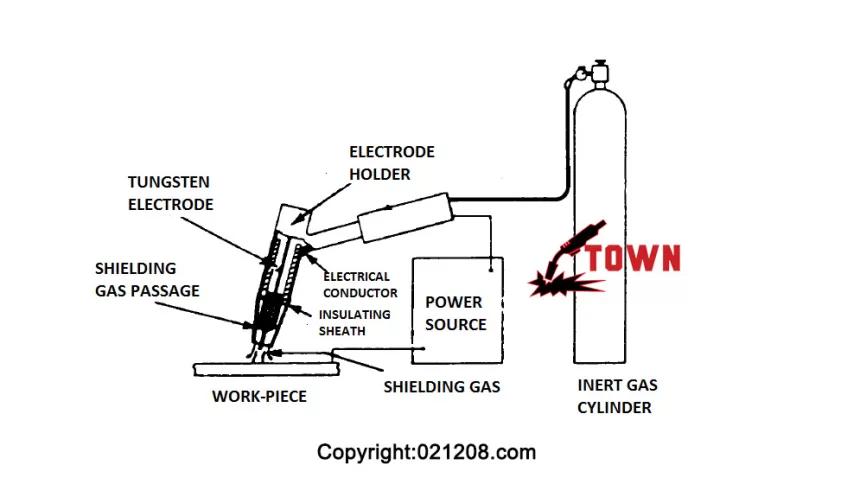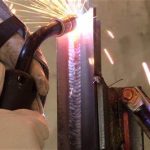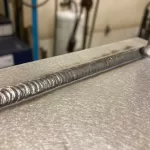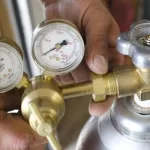TIG welding, technically known as Gas Tungsten Arc Welding (GTAW), is a precise and versatile arc welding process. It employs a non-consumable tungsten electrode to create an electrical arc that fuses metals. The key to TIG welding lies in the use of shielding gas, typically pure argon or argon-helium mixtures, which protect the molten metal from oxidation.
What is TIG Welding (GTAW) & How it Works
Welding Town
How TIG Welding Works
TIG welding operates by melting the base metal with an arc formed between the tungsten electrode and the grounded metal. This process is clean and efficient, offering precise control and minimal spatter.
Tungsten Electrode: Unlike other welding processes, TIG welding doesn’t involve physical contact between the tungsten electrode and the metal. This non-consumable electrode remains stable and clean, contributing to the weld’s aesthetic appeal.
Filler Metal: While TIG welding can join metals without filler, adding filler metal can enhance joint strength. However, adding filler metal can be challenging, as it requires the welder to feed the filler wire into the weld pool while controlling the TIG torch to avoid contaminating the tungsten electrode.
Shielding Gas: The name “tungsten inert gas” highlights the importance of using an inert shielding gas to protect the welding environment from oxidation. Argon and helium are the two most commonly used shielding gases, each serving different purposes.
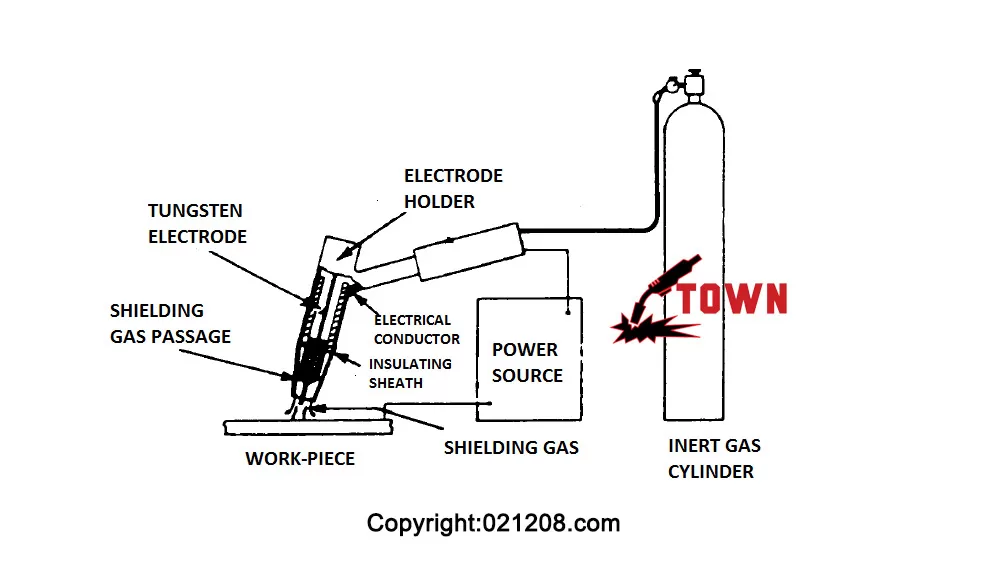
Applications of TIG Welding
TIG welding excels in precision and is often used for joining exotic materials like stainless steel, aluminum, nickel alloys, and magnesium. It offers complete control over heat input and welding arc characteristics, making it ideal for welding thin materials.
Welding Aluminum and Magnesium: TIG welding is the preferred choice for welding aluminum and magnesium due to its ability to control the heat input. The process allows welders to manage surface oxides effectively.
Weld Aesthetics: TIG welding is renowned for its ability to create aesthetically pleasing welds. Skilled TIG welders can produce clean, “stack of dimes” beads that require minimal post-weld cleanup, making it suitable for applications where aesthetics matter.
TIG vs. MIG Welding
TIG welding differs significantly from MIG (Metal Inert Gas) welding. While TIG welding uses a non-consumable tungsten electrode and optional filler metal, MIG welding relies on a consumable wire electrode that acts as both the electrode and filler material. This distinction results in differences in the welding process, aesthetics, and ease of learning.
MIG welding is generally easier to learn and more productive due to its automatic wire feeding system. However, TIG welding is preferred for applications where joint quality and aesthetics are paramount.
What’s Needed for TIG Welding
TIG welding requires specific equipment, including:
- TIG Welder: A TIG welding machine that supports AC TIG output for aluminum welding.
- Tungsten Electrode: Various types of tungsten electrodes are used, such as lanthanum, cerium, thorium, and pure tungsten.
- Filler Rods: These are used when adding filler metal to the weld pool. The type of filler rod depends on the material being welded.
- Shielding Gas Tank: Argon or helium is typically used as shielding gas, and owning a gas tank is more cost-effective than renting.
- Welding Helmet: A welding helmet suitable for low TIG amperage is required for optimal visibility.
- Gloves: TIG welding requires specialized, lightweight gloves designed for precise control.
- Foot Pedal: A foot pedal allows real-time control of amperage output, although not all TIG welding machines support this feature.
Advantages and Disadvantages of TIG Welding
Pros:
- Ensures maximum joint quality.
- Suitable for welding almost all materials.
- Ideal for thin stock.
- Low risk of weld contamination.
- Allows for welding with or without filler metal.
- Minimal spatter and smoke.
- No need for flux or slag.
- Suitable for all welding positions.
- Offers precise control over the arc and heat input.
- Provides excellent visibility of the arc and weld pool.
- Produces the best-looking welds.
Cons:
- Challenging to learn and master.
- Slower process, reducing productivity.
- Small mistakes in settings can significantly affect weld quality.
- Susceptible to disruptions in shielding gas when welding outdoors.
- Requires an investment in expensive equipment.
Careers in TIG Welding
Skilled TIG welders are in demand across various industries, including aerospace, pipeline, fabrication, structural welding, art, food and beverage, and oil and gas. The aerospace industry, in particular, offers lucrative opportunities for TIG welders. Certification is often required to secure high-paying TIG welding jobs, and specialized welding schools can provide the necessary training.
In Conclusion
TIG welding, with its precise control, versatility, and ability to create beautiful welds, is an indispensable welding process in many industries. While it may be challenging to learn and require an investment in equipment, the results achieved with TIG welding are often worth the effort. Whether you’re pursuing a career in welding or seeking to master a new skill, TIG welding offers a pathway to precision and quality in metal joining.






